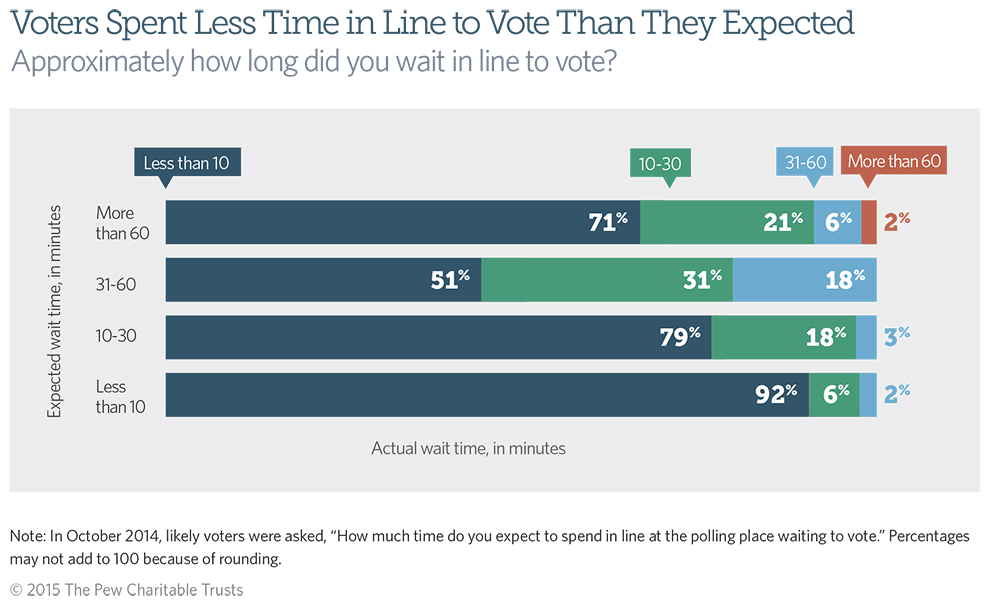New Brief: The 2014 Voting Experience
Pew today released a brief documenting the results of a series of surveys with voters about their expectations and practices during the 2014 midterm elections. The survey found that many voters spend less time waiting at the polls than they expect to; change their minds about how to cast their ballots; and return mail ballots in a variety of ways, not always using the U.S. Postal Service.
Wait times: Many voters spent less time waiting at the polls than they expected to. Among those who anticipated a wait of more than an hour, 71 percent ended up in line for less than 10 minutes. More than 90 percent of respondents who expected to wait less than 10 minutes actually did so. Only 2 percent of respondents spent more than an hour at their polling places.

Voting method: Significant variation was seen between how respondents said they planned to cast their ballots and how they eventually voted. Among those who requested an absentee ballot in the months before Election Day, for example, 23 percent ended up voting in person, either on Election Day or at an early voting site. Another 14 percent ultimately did not vote.
Mail voting: According to this research, although “mail voting” accurately describes the way ballots are sent to voters, it is not necessarily the manner in which they are returned. Roughly two-thirds of those who received ballots in the mail returned them by mail, and just under a third returned the ballots in person to a polling place, early voting center, or drop box.
Pew surveyed the same group of individuals in the months leading up to and immediately after the November 2014 midterm elections.
Follow us on Twitter using #electiondata and get the latest data dispatches, research, and news by subscribing today.








